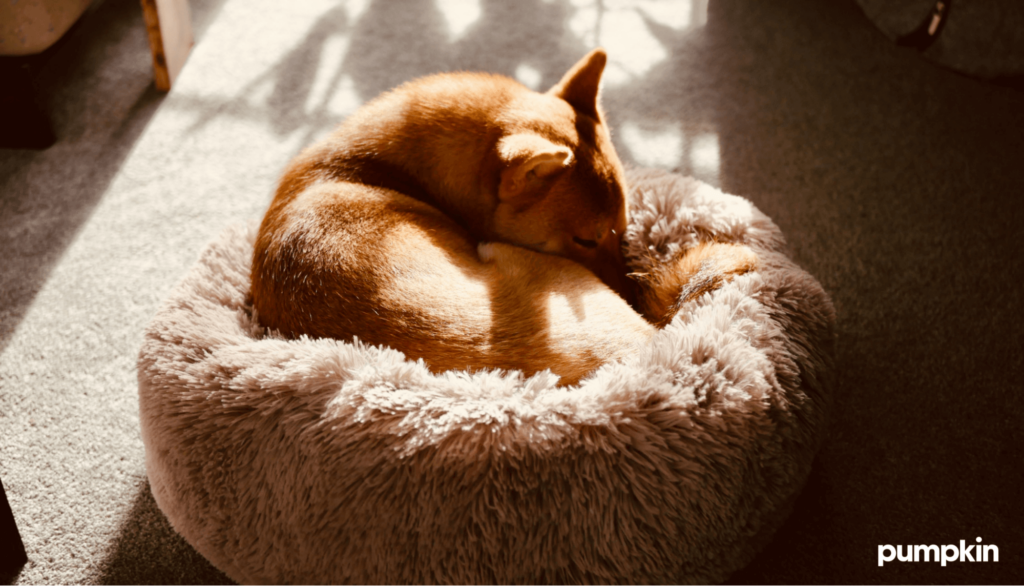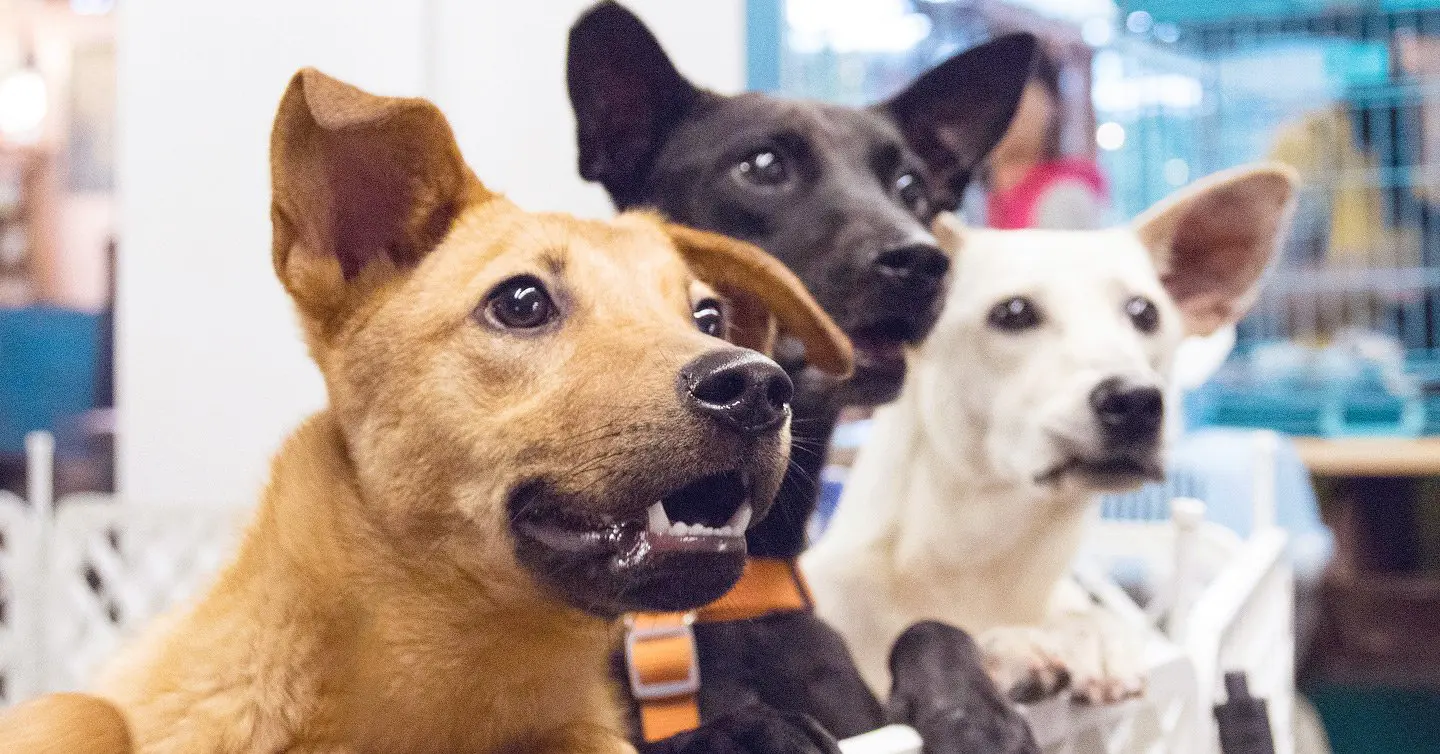Key Points
- Swollen lymph nodes are the most common warning sign of lymphatic cancer in dogs, but symptoms like lethargy and weight loss can also appear.
- Many other conditions also cause swollen lymph nodes, so talk to your veterinarian before you assume the worst.
- Early detection and treatment of lymphatic cancer can improve your dog’s prognosis and overall well-being.
You know your dog better than anyone. So when something feels off — like a lump that wasn’t there before or a sudden change in behavior — it’s hard not to worry. Some lumps are completely harmless, while others, like swollen lymph nodes, can be an early sign of lymphoma, one of the most common types of cancer in dogs. But before you panic, take a deep breath.
Even if your pup is eventually diagnosed with lymphatic cancer, catching this disease early can make a huge difference. When you know the early warning signs of lymphoma, you can take prompt action to protect your dog from this fast-acting form of cancer. In this guide, we’ll break down common symptoms of lymphatic cancer in dogs, treatment options, and ways to keep your dog comfortable at every stage.
What is lymphatic cancer in dogs?
Canine lymphatic cancer, or lymphoma, is one of the most common cancers in dogs. It affects the lymphatic system, which helps the body fight infections. This system moves white blood cells (lymphocytes) around the body, so when cancer develops there, it can spread fast and cause serious health problems.
Hearing the word “cancer” during a vet appointment is always scary, but knowing how lymphoma works is the first step in helping your dog.
Types of lymphoma in dogs
Lymphoma manifests differently in each case. The disease most commonly forms in the lymph nodes, digestive tract, chest, or other organs. It can appear in a single lymph node or spread throughout the body, and where it develops impacts the symptoms and treatment options.
Here’s a breakdown of the most common types of lymphoma in dogs:
Multicentric lymphoma (most common)
This form affects the lymph nodes, leading to noticeable swelling in the neck, armpits, groin, and behind the knees. Dogs with multicentric lymphoma may act totally normal at first, but the disease progresses quickly without treatment.
This type can be classified as either B-cell or T-cell lymphoma. B-cell lymphoma generally responds better to treatment, while T-cell tends to be more aggressive.
Alimentary lymphoma (digestive tract)
Alimentary lymphoma targets the stomach and intestines, leading to vomiting, diarrhea, weight loss, and appetite changes. Since it affects internal organs, it’s not always obvious right away.
Mediastinal lymphoma (chest cavity)
Mediastinal lymphoma occurs in the thymus or chest lymph nodes, leading to breathing difficulties, coughing, and fluid buildup around the lungs.
Extranodal lymphoma (organs & skin)
This rare form of the disease can affect the skin, kidneys, eyes, or central nervous system. Symptoms vary depending on where they appear but may include skin sores (cutaneous lymphoma), vision changes, or neurological issues.
No matter where lymphoma tumors grow, early detection gives your pup the best shot at a longer, happier life. Knowing what signs to watch for can help you get ahead of the disease.
How do I know if my dog has lymphatic cancer?
The first sign of lymphatic cancer is often swollen lymph nodes, but symptoms can vary depending on the type of lymphoma and how far it has progressed. As in humans, lymph nodes can also swell because the body is fighting an ordinary infection. Other clinical signs, like weight loss or low energy, might be subtle at first. Some symptoms, like persistent coughing or unusual lumps, are easier to spot.
Some common lymphoma symptoms include:
Enlarged lymph nodes
A firm lump under your dog’s jaw, armpits, groin, or behind their knees could be an early warning sign. These swollen lymph nodes are often painless, so they might go unnoticed until they become more pronounced. Regular belly rubs and ear scratches? Great for bonding, and also a sneaky way to check for sudden growths on or under your dog’s skin.

Lethargy and loss of appetite
If your always-hungry pup suddenly turns down their favorite treat or seems more tired than usual, it could be more than just a slow day. Dogs with lymphoma will sleep more, lose interest in playtime, or seem withdrawn from their normal activities.
Weight loss or bloating
Some dogs with lymphoma lose weight rapidly, even if they’re eating normally. Others may develop bloating or a potbellied appearance, especially if lymphoma is affecting their organs. If your dog’s shape is changing and you’re not sure why, check in with your vet.
Persistent cough or breathing difficulties
A cough that won’t quit? Labored breathing? These could be signs of mediastinal lymphoma, which affects the chest cavity. If your dog sounds raspy or seems out of breath after mild activity, it’s time for a vet visit.
Skin lesions
Not all lymphomas form lumps inside the body. Some show up on the skin as red, flaky patches, ulcerated sores, or raised bumps. If your dog has persistent skin issues that don’t seem to heal, lymphoma could be the underlying cause.
Some of these symptoms are subtle and others are hard to miss — but all are worth a follow-up with your vet. If you notice persistent swelling, breathing issues, or unexplained weight loss, schedule a vet appointment as soon as possible.
What is the treatment for lymphatic cancer in dogs?
Because lymphoma is a common disease in dogs, veterinarians have learned a lot about treating this disease. Several treatment options can help your pup stay comfortable and even extend their life expectancy.
Your vet will start with blood tests, imaging, and biopsies to diagnose the disease, determine the stage, and create a treatment plan. From chemotherapy to palliative care, here’s what to know about each option.
Chemotherapy is the most common treatment
For most dogs, chemotherapy is the primary treatment for lymphoma. It works by slowing down cancer cells in the lymph nodes, blood, or even bone marrow, helping many dogs go into remission. This means the cancer cells become undetectable for a period of time, though the disease may return later.
Most dogs tolerate chemo well, with minimal side effects like mild nausea or fatigue. In fact, up to 90% of dogs achieve remission after treatment. The downside? Chemotherapy protocol requires frequent vet visits and can be costly, depending on the treatment plan.
Radiation therapy
Radiation therapy is often used when lymphoma is localized, such as tumors in the skin, nasal passages, or chest cavity. It works by targeting specific areas, helping to shrink tumors and relieve symptoms.
Radiation is a great option for localized tumors, but it’s not available at every veterinary clinic. Some dogs may also experience mild skin irritation in the treated area.
Surgery
Unlike with mast cell tumors in dogs, surgery isn’t typically used for lymphoma. However, in cases where a solid tumor is present in an organ like the skin or intestines, removal may be possible.
While surgery can completely remove an isolated tumor, it’s not an option for widespread lymphoma. Your vet will determine if a surgical approach makes sense based on your dog’s specific case.
Palliative care
When intensive treatments aren’t the right choice, palliative care focuses on relieving pain and keeping your dog comfortable.

This approach often includes steroids or anti-inflammatory medications to help with breathing difficulties, swelling, or pain. A veterinarian may also prescribe or administer painkillers to help your dog stay comfortable. Palliative care won’t stop the cancer from progressing, but it can help dogs feel better in the final stage of life.
Choosing the right treatment can feel overwhelming, but you don’t have to do it alone. Your vet will help you weigh the options and find the best plan for your dog’s unique needs.
What’s the life expectancy for dogs with lymphatic cancer?
Lymphatic cancer in dogs isn’t curable, but treatment can extend their lives and keep them on their paws for longer. With chemotherapy, many dogs live another 6-12 months, and some go into remission, meaning the cancer cells shrink to undetectable levels. Without treatment, advanced forms of lymphoma can be fatal in 1-2 months.
How long remission lasts depends on factors like your pup’s age, overall health, and the lymphoma type. Some dogs respond so well to treatment that they get multiple rounds of remission, giving them extra time to enjoy life. While lymphoma often comes back, your vet can help adjust the treatment to keep your dog as comfortable and happy as possible.
There’s no way to predict exactly how much time you’ll have, but the right care can make every day special.
Does pet insurance cover lymphoma?
Yes, in many cases, pet insurance can help cover the costs of lymphoma treatment, but not if it’s a pre-existing condition. That’s why signing up for pet insurance early in your dog’s life can be beneficial. As soon as your dog experiences the first symptoms of lymphatic cancer, vet bills for cancer treatment won’t be eligible for pet insurance coverage.
Lymphoma treatment, especially chemotherapy and ongoing vet care, can be expensive. If you want to say yes to the best care, Pumpkin Dog Insurance plans can help cover eligible expenses related to cancer treatment. This way, you can focus on your pup, not their vet bills.
We know a lymphoma diagnosis can feel terrifying. Catching lymphoma symptoms early, exploring your treatment options, and working with your vet can help your dog live a longer, more comfortable life. Whether it’s chemotherapy, radiation, or simply keeping your pup pain-free for as long as possible, you don’t have to navigate this diagnosis alone.
FAQs
- https://pubmed.ncbi.nlm.nih.gov/26953614/
- https://www.msdvetmanual.com/circulatory-system/lymphoma-in-dogs/lymphoma-in-dogs
- https://lindenvet.co.za/the-canine-and-feline-lymphatic-system
- https://www.imprimedicine.com/blog/types-of-canine-lymphoma
- https://www.msdvetmanual.com/dog-owners/blood-disorders-of-dogs/malignant-lymphoma-in-dogs
- https://www.kingsdale.com/causes-of-swollen-lymph-nodes-in-dogs
- https://www.akc.org/expert-advice/health/chemotherapy-for-dogs/
- https://www.vet.cornell.edu/hospitals/services/oncology/oncology-medical-conditions
- https://www.merckvetmanual.com/special-pet-topics/cancer-and-tumors/cancer-treatment
- https://www.vet.cornell.edu/departments-centers-and-institutes/riney-canine-health-center/canine-health-information/difficult-decisions
- https://www.vetspecialists.co.uk/fact-sheets-post/lymphoma-in-dogs-fact-sheet/
- https://www.thevetiverse.com/en/latest/lymphoma-in-dogs-101-a-guide-for-veterinarians/




